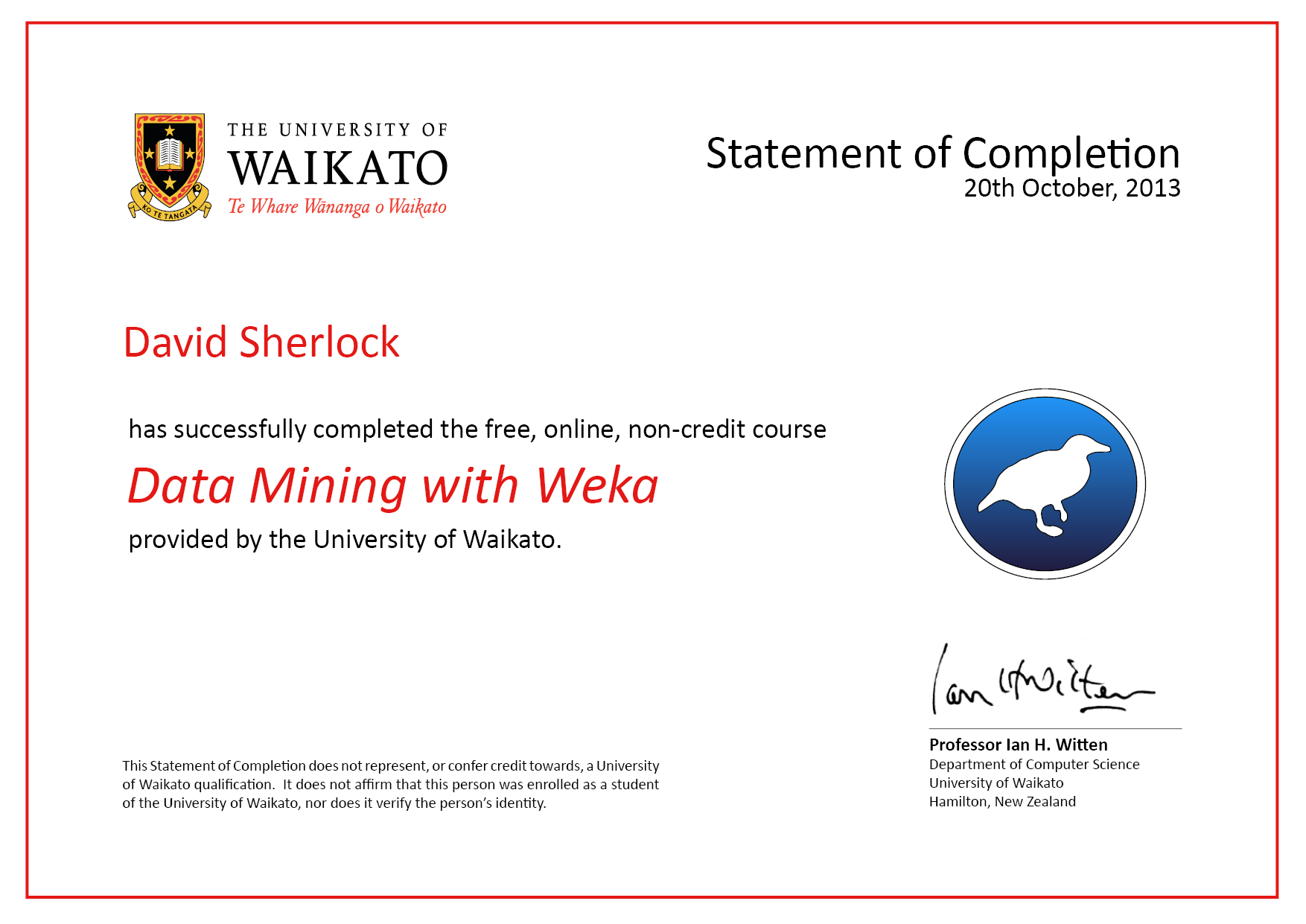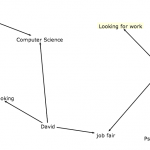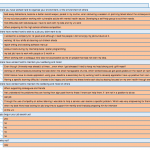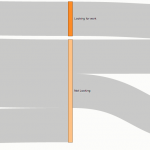Those who subscribe to the CETIS newsletter will receive the top posts of the month ranked by the total number of views they’ve had, while its nice to see what our audience find interesting sometimes we have our own personal favourites that we’d like to share. I asked CETIS staff if they wanted to share any of blog posts they had written in 2012 they were fond of and why..
Sharon:
My favourite post of 2012 is “The MOOC just got even better“, which mentions some of my reflections on taking Stanford’s HCI MOOC over the autumn semester. There has been a lot of MOOC-bashing lately and whilst they’re not perfect (in fact Coursera has only been around for a year), from a student’s point of view they’re a great way to access free education from reputable institutions. Sometimes I think we’re so busy looking at the technology or the process, that we forget about the student. To be involved in something at the beginning that will undoubtedly mature and change is exciting and I look forward to seeing how MOOCs will evolve.
Simon:
For this year, I choose not a post that has received comments, but one that has not, Follower guidance idea.
I had first used the term “follower guidance” in a CETIS e-mail in May 2011, so it had brewed in my mind for over a year before this exposition. I think we (in CETIS/IEC) should be doing this kind of exposition of vision, whether or not it is immediately recognised or responded to. In this case, I have to accept that people have not yet digested the idea enough to comment on it, though when I explain it face-to-face it seems to be understood and appreciated at some level. So I offer this post as a hope for the future — maybe it will be referred to by others as the ideas come to make more sense.
Sheila:
First one is “a conversation around what it means to be a digital university“. This was a personal favourite as it was more of a staff development activity for me as it allowed me to co-author some thoughts with my Strathclyde Uni colleague Bill Johnston around strategic aspects of becoming a digital university. We’ve had very positive feedback, conference presentation and a couple of papers in the pipeline from this. We’ve also been approached by Napier University to be critical friends over the next year as they develop their digital strategy.
The second one, is one of those posts that I kind of wrote off the cuff and is “learning analytics, where do you stand?“. It was really useful to reflect on a presentation from Gardner Campbell about learning analytics, and I got quite a few comments, which is always good. The post also helped to set the scene for our work on analytics this year which culminating in the CETIS Analytics Series.
Martin
Notes on technology behind cMOOCs: Show me your aggregation architecture and I’ll show you mine
This post started as a simple analysis of the infrastructure around MOOCs, but as a wrestled with the text a couple of revelations emerged.
Focusing on the connectivist style of courses it’s evident that instructors are picking up the tools around them to manage courses. Because, as Downes commented, ‘users are assumed to be outside the system for the most part, inhabiting their own spaces’ aggregation of data becomes key. Even when you deal with well-established technologies like blogs there are interoperability issues with extracting data like category/tags and user comments. One of the key challenges in moving connectivist style MOOCs forward is developing tools that can effectively aggregate data from a range of sources and provide actionable insights for both tutors and students. This post highlights some current work and possible future directions.
Do you git it?: Open educational resources/practices meets software version control
Software version control tools like Git have long provided software developers a space to collaboratively work on projects providing an easy way track, contribute and modify code even when offline. Given the features of remixing and branch existing material you’d think it would make the ideal repository for open educational resources (OER). This solution is not without its issues such as confusing terminology and very structured workflows but it’s interesting to see non-coders adopt Git as a place to host their content. This post highlights some existing examples like open bid writing, music and course content and asks should we be Gitting OER.
Phil
At the end of the JLeRN experiment
Not so much because of what is in the blog post but because of the work it represents which illustrates how CETIS can spot an innovation that looks interesting and work with Jisc and Jisc services to trial it in a UK F&HE context.
Lorna:
Since Phil has already chosen his JLeRN Experiment blog post, I’m going to choose this: OER Booksprints Reflections
I’ve chosen this as post as undertaking a booksprint to synthesise, record and disseminate the technical outputs and issues surfaced by Jisc programmes was an entirely new approach for both Jisc and CETIS. A booksprint is essentially an accelerated facilitated writing retreat and our aim was to draw together the significant technical outputs of three years of the JISC / HEA Open Educational Resources Programmes, reflect on issues that arose and identify future directions. I think its fair to say that we all approached the task with some trepidation and perhaps even a little scepticism but we were all greatly surprised and encouraged by the result: “Technology for open educational resources – Into the Wild”, which will be available to download as a free ebook, or to print on demand in the new year. On reflection, we all agreed that this was a very effective way to synthesise the complex outputs of the programmes and I would certainly recommend this approach to others. And who knows, we might even plan another sprint in the new year!



